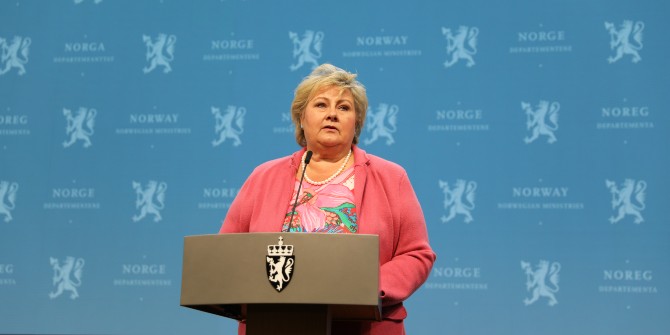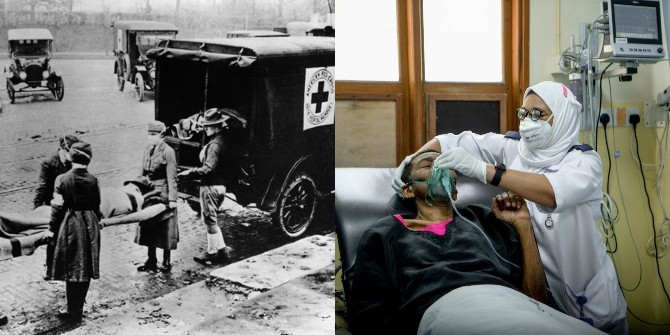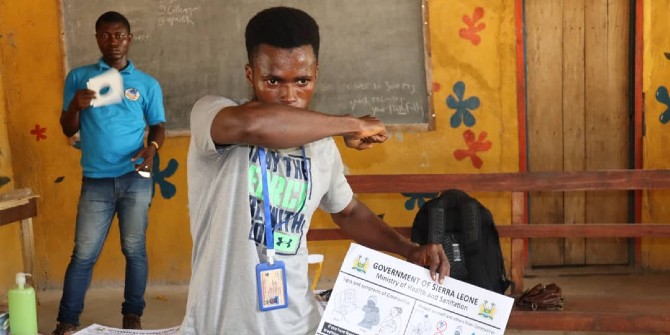The generosity of the Nordic states during the pandemic has acted as a powerful financial stimulus, writes Anniken Grønstad. Although it is not clear whether these changes will be permanent, they indicate that the Nordics intend to pursue redistributive rather than austerity policies.
“It is a regrettable but human fact that money (and the lack of it) is linked to personal and family self-respect”, wrote the pioneering British social researcher Richard Titmuss. Periods of economic decline, like the ones spurred by the Great Recession and the ongoing pandemic, are notorious drivers of inequality. The gap between the rich and the rest widens, and people struggle even more to make ends meet. Governments have therefore introduced numerous programmes to alleviate the economic consequences of the pandemic.
The Nordic states generally hold strong macroeconomic positions, with the tools and resources to manoeuvre and intervene whenever necessary. The prevalent Nordic and European economic policy doctrine dictates that the lower the public debt, the more room there is for economic stimulus during recessions. Such policies may explain the rationale governing the enormous financial packages launched by Denmark, Norway and Sweden, in particular, to remedy the financial crisis brought on by the pandemic. Norway, with its oil fund, also has a significant buffer to the economic ramifications of the crisis. The need to use these reserves, however, is now acting as a force reshaping government thinking about the country’s financial dependence on this industrial sector. It is expected to lead to the adoption of a green transition package in the years to come.
The Nordic countries’ approach has shown that they share a common preparedness to act firmly, and that there is an expectation that the government performs swiftly, quickly and forcefully in times of crisis. At the same time, citizens and governments have exercised considerable reciprocal trust, and the pandemic has highlighted the importance of trust in public institutions.
Nordic welfare states have made great efforts to avoid a trade-off between social and economic considerations
These countries have expanded several welfare benefits to help maintain purchasing power and limit the risk of liquidity-containment. Policies have been tailored to help firms through the crisis. Indeed, by providing liquidity – in terms of deferred payments of various taxes and duties, investing in companies, offering loan guarantees to businesses in the private sector (including SMEs), and providing wage subsidies to escape layoffs – governments have aimed to curb unemployment and redundancy and buttress employers, employees as well as specific industries.

Another hallmark of the Nordic welfare states’ policies has been to protect household income by offering extensive wage subsidies, making unemployment benefits more accessible, and allowing workers like the self-employed and freelancers to qualify for temporary financial support. In some countries, such as Norway, unemployment benefits have been made more generous. In addition, funding for education and training has been expanded. These are important mechanisms that provide a security net for citizens, allowing them to participate in society and maintain their standard of living. Workers are protected against massive salary losses during unemployment, which, in turn, also stimulates and supports macroeconomic recovery and activity in the wake of downturns by ensuring that people have money to spend.
It is difficult to say whether the more inclusive and generous welfare provisions will last and become a permanent feature
Besides extending the unemployment insurance policy and relaxing qualifying rules, several additional programmes have been altered or introduced to mitigate the consequences of the pandemic. These include providing new forms of support during sickness, or widening access to existing types. Various changes have been introduced to family policies, such as increasing the number of days available for childcare. Denmark has also introduced a support scheme granting parents daily sickness benefits if their children were sent home from school because of contact with a COVID case. In general, the changes in family policies seen in the Nordic countries during the pandemic can be viewed as a reflection of these governments’ focus on inclusion and their efforts spent on preserving the high level of equality that characterises Nordic countries.
Overall, their approach to the COVID crisis is centred largely around extensive fiscal policy, an active labour market policy, and policies that aim to ensure social capital and expand welfare benefits. The policies have been targeted at supporting employment, protecting citizens from the stigma often associated with reliance on welfare support, and maintaining cohesive societies. The stress test to which the pandemic has exposed the Nordic welfare states has arguably not shifted nor weakened the universal and inclusive principles on which these welfare regimes rest. Instead, it has reinforced the role of state intervention in economies, aiming to secure work and avoid situations in which citizens have to compromise living standards and participation in society because of unemployment. In this way, the Nordic welfare states have made great efforts to avoid a trade-off between social and economic considerations.
Although the Nordic states seem to have dealt with the economic aspects of the crisis well, their exit strategy is not necessarily linear or clear cut. For example, it is difficult to say whether the more inclusive and generous welfare provisions will last and become a permanent feature. The lower levels of unemployment and economic decline observed in these countries compared to many others may nevertheless reflect the magnitude of the egalitarian policies these states have enacted, and the institutional patterns that motivated them. Indeed, the extension of financial support to workers who were previously not eligible for it (the self-employed, entrepreneurs, and freelancers) may be viewed as a step towards even more inclusive welfare states in the future. It arguably limits the risk of deepening labour and welfare duality. Extending welfare schemes and making them more generous therefore seems to have acted as a powerful type of fiscal stimulus.
A welfare system that accommodates generosity, de-commodification, and universalism is an important driver of lower inequality, as it counts at least some of the financial adversity arising from shocks like unemployment or financial or health crises. These welfare regimes afford state and government leaders an opportunity to avoid austerity programmes and instead focus on redistributing resources that boost not only individuals, but state economies as well.
This post represents the views of the author and not those of the COVID-19 blog, nor LSE.





